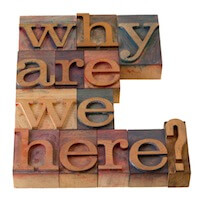 Kary Delaria is a digital PR strategist and social media research analyst for Kane Consulting, a social media firm that specializes in cross-channel integration.
Kary Delaria is a digital PR strategist and social media research analyst for Kane Consulting, a social media firm that specializes in cross-channel integration.
One of the biggest obstacles I’ve seen to social media success is that many people assume the same strategies and tactics that work well offline can be applied to this space. Most recently, this struck me with regard to influencer outreach.
I was discussing this with my colleague, Jennifer Kane, after she attended the Influencer Throwdown Panel with David Binkowski, Kevin Dugan and Krista Neher (moderated by Saul Colt) at SXSW Interactive. One thing that really got her thinking was this interesting concept that the panel posed:
The biggest mistake PR professionals make when working with influencers is to take a media relations approach, rather than a community relations approach.
As digital PR strategists, this sparked a fire in our brains.
Where are PR pros likely to make this mistake? What’s not translating?
Influencer outreach starts with defining the influencers, and, I’ve written that there are some traditional techniques that can be used for this approach. (Full disclaimer – there’s a lot more that goes into this, and that’s not what this post is about.)
But, the problem is in the execution. Once you’ve got an idea of who the influencers are that you’d like to reach, the natural media relations approach is to then use social media to “pitch” them – tweeting press releases or posting them to a blog; sending pitches via DM; finding an expert via Quora or LinkedIn. This is where the traditional media relations approach needs to end, and the social community relations approach must start.
The social space is a robust channel of two-way conversation. And, as panelist Kevin Dugan said, “When an influencer comments or does something, the conversation changes.”
The Community Relations Approach…
Define goal, content and context. It’s simply not enough to build a list of influencers. These are your “conversation changers.” What do you want to have happen? What are you going to say to them to inspire them to join the conversation? (Better yet, what do they want or need to hear from you?)
Test the action and outcome. Panelist David Binkowski had a great suggestion: If you are running an influencer campaign, set up the category and then run a test of that pool. How do you know if you’ve got the best set of influencers? We all know that there is no exact science to identifying influence. Just because the suite of tools you used to build your list told you these are your influencers, there’s no guarantee that all of them are the right fit for your pool. By running a test, you can clearly identify who is eager to participate in your community. From there, you can refine the list as necessary.
Manage the community. You built it. And, they came. They’ve shown you that they are listening and will be active participants in your community. It’s your responsibility to continue to listen, share and provide relevant content, whether it is in the form of information, product updates, exclusive deals or access – the possibilities are endless.
Online influencers are “influential” because they love to be social and active in this space. Pushing traditional methods on them is awkward and might only serve to alienate them from your brand. Invite them into your social community and give them a place to be your best brand advocate.
So, smart SpinSucks readers, I’d love to hear from you! How have you used a community approach influencer relations? What has (or hasn’t) worked for you?
[You can read David Binkowski’s recap of the Influencer Throwdown panel on his blog.]
Kary Delaria is a digital PR strategist and social media research analyst for Kane Consulting, a social media firm that specializes in cross-channel integration. She can be reached via email or on Twitter.